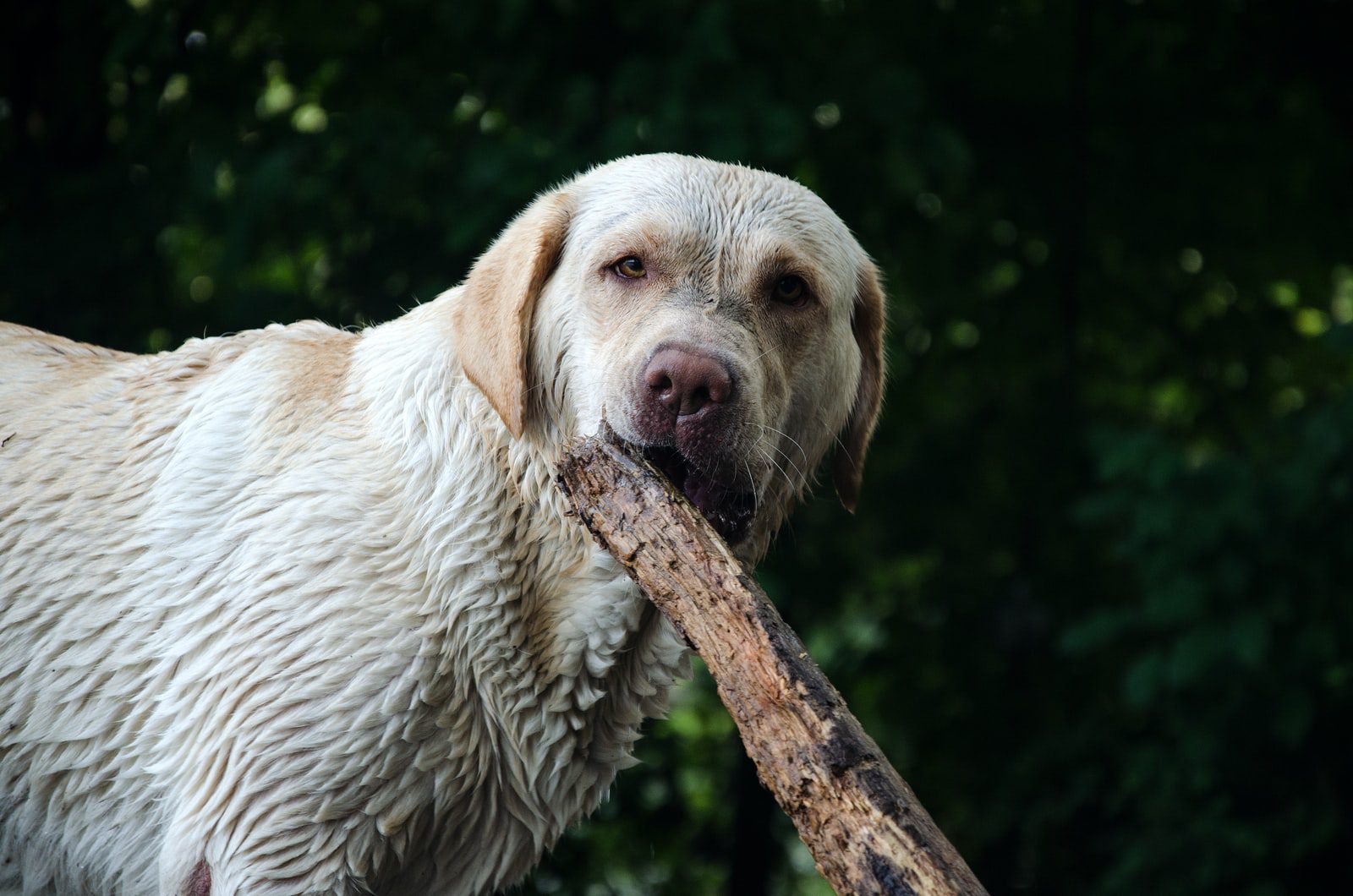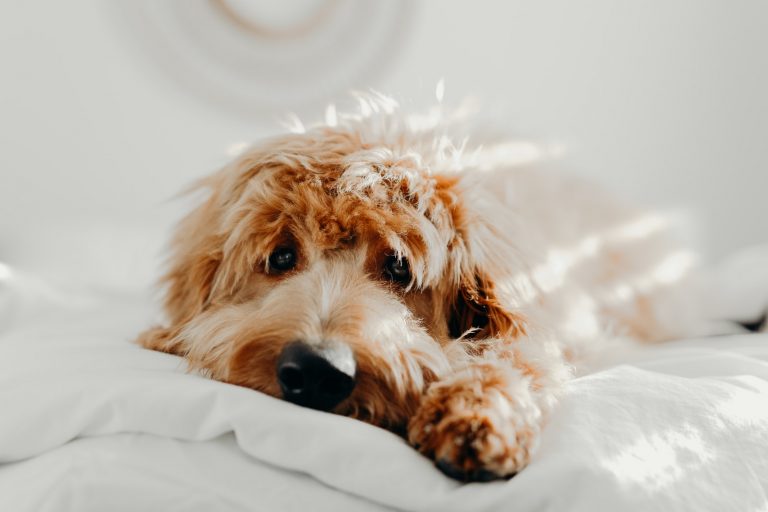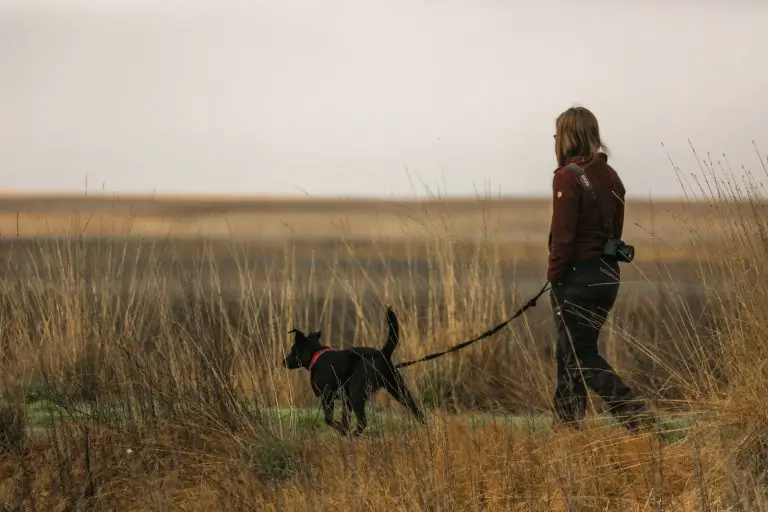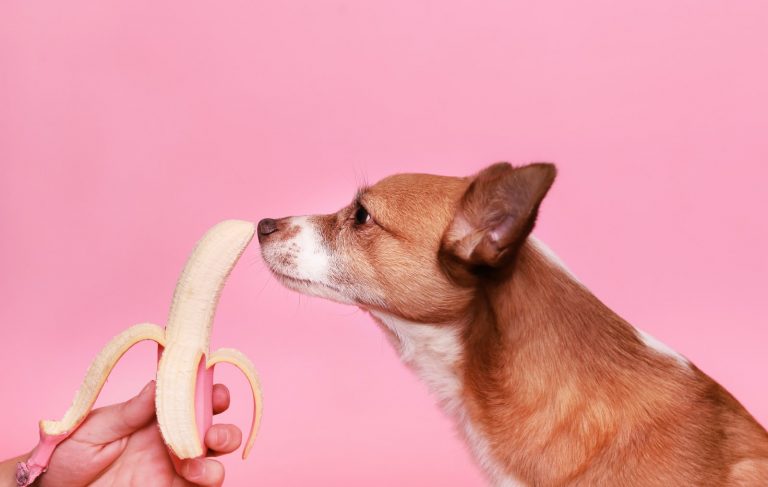If you own a dog, you must have noticed how much they love chewing sticks. Finding a stick, chasing it, hunting it down, and finally chewing on them is one of their favorite hobbies. This gets you wondering why do dogs chew sticks.
Dogs will chew on a stick anywhere they can find it. They love doing it, and you simply don’t know why. Dogs love it so much that you feel bad denying them a stick when they want one.
However, one thing we always keep thinking about is, ‘Is it safe for my dog to chew on a stick?’ More importantly, does it cause any harm to them if they keep doing this because, honestly, nothing stops them from doing it?
In this blog post, we will address all your concerns about dogs chewing on sticks, the reasons they do so, and how you can stop it.
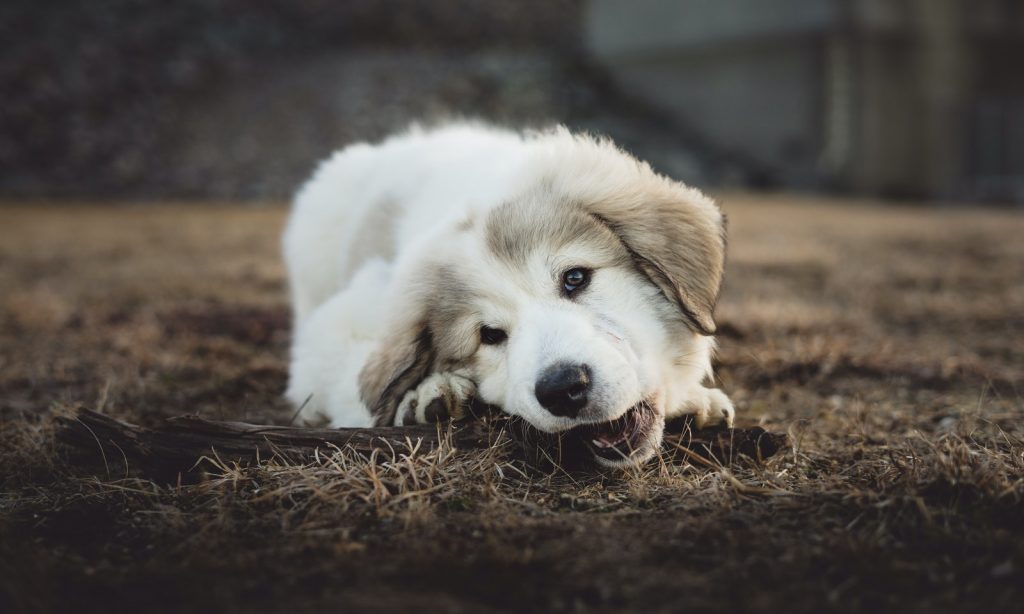
Why Do Dogs Love Chewing Sticks So Much?
The first question in the mind of any dog owner is why dogs are attracted to sticks so much? What is it about sticks that they can’t help but chew on them like crazy?
Here are some reasons why your dog, just like all other dogs, is drawn to stick and loves chewing on them.
We love our dogs and treat them like our family members. We love and care for them so much that we often tend to forget that dogs evolved from wild animals. It is in their natural ancestral instincts to be attracted to wild things.
Thus, whether a dog is in a park or out there in the wild, they are attracted to foraging through different things in search of food. Your dog may think of a stick as a good substitute for food, even if they have had their fill at home.
Every dog owner would agree to the fact that dogs are one of the most curious pets out there. They use their noses and mouths to explore the world. You must have noticed your dog smelling any foreign object that they can find in your backyard.
If the object appears to be safe, they will further chomp it down. For dogs that are kept as pets, a stick arouses their curiosity, and they cannot help but explore it. Thus, they tend to sniff and chew it to find out what the thing is.
Just like human infants, puppies also go through a painful process of teething. Puppies like to chew on things when they start sprouting new teeth. This helps alleviate teething pain. Thus, you will notice them chewing on anything they can find. From your new pair of shoes to pillows and sticks, they find anywhere in the backyard or the park.
Chewing on sticks seems like the best choice here instead of getting the stuff in your home ruined by the pups during their teething phase. However, you need to be careful as the puppies may be encouraged to chew on other wooden items in your house, including table legs, chairs, and bookshelves.
Dogs may be smart, but they are not smart enough to differentiate between a chew toy, a bone, or a stick they found. Dogs are also drawn to the natural, earthy taste of sticks. Using a stick to play fetch also confuses them into thinking that it is just one of the regular things that they can chew on just like a toy or a ball.
While chewing sticks sometimes is not bad for your dog. However, if you find your dog chewing on a stick all the time, then it may be a problem. Pica is a common condition that affects many dogs.
In this condition, dogs are attracted to eating non-food items, which can lead to serious health concerns. Poor socialization and lack of exercise are the everyday things that trigger pica. If you notice your dog eating things that they aren’t supposed to be eating, then it is best to consult with a veterinarian.
Watch the video below on why do dogs love to chew wooden sticks or tree bark.
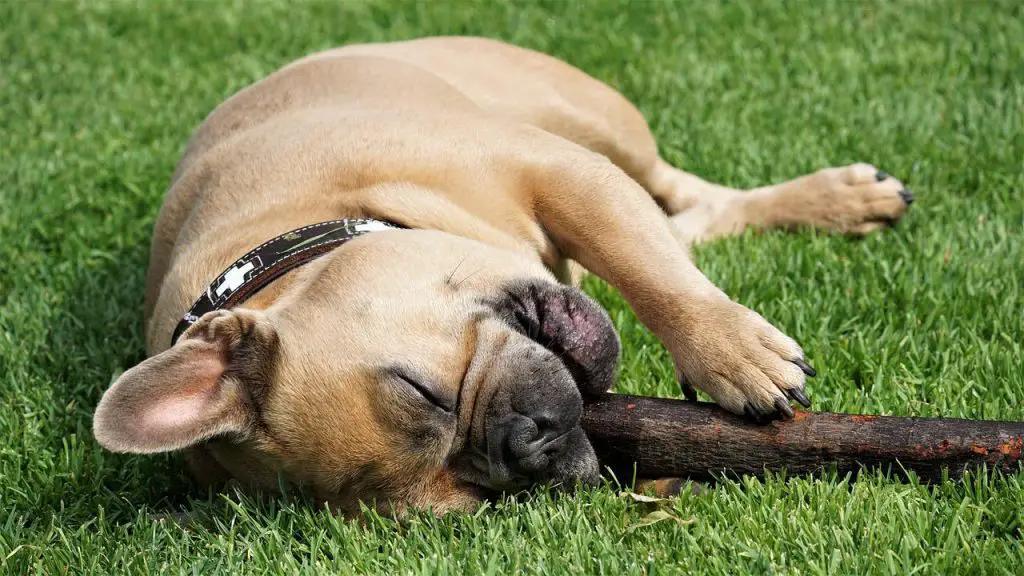
Is Chewing a Stick Dangerous for Dogs?
Dogs like chewing on sticks until the stick breaks into tiny fragments. They keep gnawing at the ends, making the stick splinter apart. Chewing on a stick is not too dangerous until your dog starts swallowing the tiny fragments. Splintered wood and small pieces inside your dog’s system can cause serious health issues.
Here are some risks dogs face if they chew on and eat sticks.
Does your dog eat a lot of sticks?
You need to address this concern immediately as it can lead to gut impaction. All the wood that the dog has chewed tends to knot up inside your dog’s intestines. It blocks their intestine or gut, which can lead to serious health issues. Food is unable to pass through to the stomachs of dogs due to blockages, and this leads to severe vomiting accompanied by dehydration.
The sticks and wood also cause the intestine of the dog to become stagnant. In severe cases, bacteria are released into the bloodstream of the dog, which can lead to their death. Severe gut impactions are life-threatening for dogs and require immediate attention and treatment.
Take your dog to the veterinarian immediately if you notice any change in their eating behavior, constant vomiting, or dehydration. The vet will immediately conduct an X-ray on the dog to find out if they need surgery to remove the obstruction blocking its gut or intestines.
Another sign that your dog is eating too much stick and wood is constipation. It will become difficult for them to pass their stool if they chew on a lot of wood and try to digest it.
Constipation in dogs can be just as dangerous as it is in humans. Thus, it is vital to get it treated as soon as you can. It can cause severe pain for the dog. It can lead to severe vomiting. It may also lead to the release of toxins in the bloodstream of the dog.
Most of the cases of constipation in dogs can be treated easily with laxatives and enemas. However, you might require the intervention of a veterinarian if constipation becomes worse.
Chewing on a lot of wood and sticks can cause severe stabs or tears in the walls of the stomach and intestines. With a hole or tear in the intestines, the contents of the dog’s gut can leak into other parts of their body. This can lead to severe poisoning. They may require emergency surgery to repair the tear. This is the only treatment option available to them.
However, severe cases of peritonitis often lead to the death of the dog. Therefore, it is vital to keep an eye on the health of your dog and take them for treatment immediately if you notice any signs of a problem.
Do you know that the branches of some fruit trees like pear, lemon, and apple have toxins in them? This can lead to stomach cramps and nausea. Dogs are very attracted to these types of sticks because of their aromatic smells. It is essential to make sure that your backyard is free of such sticks and wood so that your dogs don’t get to chew on them.
There are also other types of branches that are dangerous for dogs. These include branches and sticks from azaleas, red oak, black walnut, red maple, black cherry, yew, and black locust trees. These can be poisonous for dogs and can lead to severe complications.
When a dog tries to chew on a stick too big for their mouth, it can lock their mouth open. Sticks can also get in the roof of their mouth. In severe cases, sticks can get stuck in the dog’s throat. It can lead to life-threatening situations and make it difficult for dogs to breathe. Therefore, it is important to keep an eye on your dog. Check them for any health issues and remove any sticks that appear to be stuck in their mouth.
What to Do If My Dog Eats Sticks?
Eating a stick sometimes isn’t too dangerous for your dogs. However, if your dog has gotten into a habit of eating sticks too frequently, then it is a problem. Just chewing on sticks is something most dogs do. However, things become problematic when they start eating and swallowing wood.
Some warning signs can help you find out if your dog has overeaten wood. These signs usually appear about 72 hours after your dog has eaten a lot of sticks. Take your dog to the veterinarian as soon as you notice any of these signs:
- Blood in stool
- Gagging or choking
- Difficulty in breathing
- Whining or whimpering
- Difficulty in passing stool
- Disinterest in playing
- Lethargy and tiredness
- Not drinking or eating enough
- Diarrhea
- Pacing or restlessness
- Too much drooling
- Fever
- Too much panting
- Any other unusual behavior
These are all warning signs that require the immediate attention of a veterinarian. Take your dog to the veterinarian immediately and get them checked.
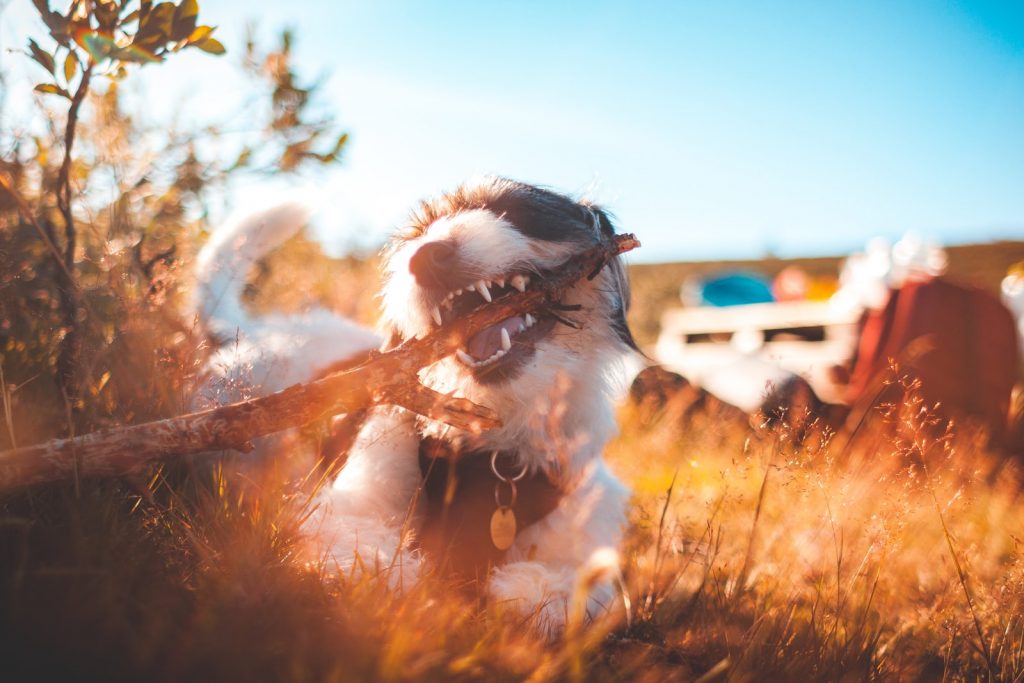
How to Prevent Your Dog from Chewing on Sticks?
It is important to train your dog not to chew or eat sticks. It is a behavior issue like many others and will require you to deal with it with patience, positive reinforcement, and vigilance.
Here are some things you can do to train your dog not to chew stick or eat wood.
Do you have trees in your yard? If yes, then you should cut foliage and remove sticks from your yard. Make it a habit to do so every week. It is especially important if you have any tree species that can be harmful to your dog.
As a dog owner, it is your responsibility to ensure that you create a safe environment for your dog. Your dog will not be interested in chewing on sticks when they don’t have the habit of doing it. Train them.
If you see your dog chomping down on a stick, give them a chew toy instead. You can use their favorite toy as a distraction every time they try to chew on a stick or want to eat wood. Doing it often will train them that they should only chew a chew toy and not try to eat a stick.
Dogs love to play. You need to spend time playing with them to make them understand what’s good for them and what’s not. Whenever you take your dog out for exercise or walk, make sure you have a proper fetch toy they can play with. This will prevent them from being tempted to pick up sticks, throw them, or chew on them.
Watch the video below on how to get your dog to stop chewing on wooden sticks.
Final Thoughts on Why Do Dogs Chew Sticks
Chewing comes naturally to dogs. They are naturally curious animals and look for new things. Occasional chewing of sticks will not cause them any harm. However, if your dog has gotten into a habit of chewing sticks, then it is a problem that needs to be addressed as soon as possible.
This blog post discussed in detail the reasons why dogs chew stick and eat wood. You also read about the warning signs that you need to take your dog to the veterinarian. Keeping a dog as a pet is a source of great comfort and happiness.
However, just like all other pets, you need to be careful about their health. Training them will make it easier for you to handle them. It is important to take care of their health and well-being and look for any signs of distress that they may be showing. It is also essential to find a good veterinarian near your house so that you can take your loving dog to them in case you need help.

